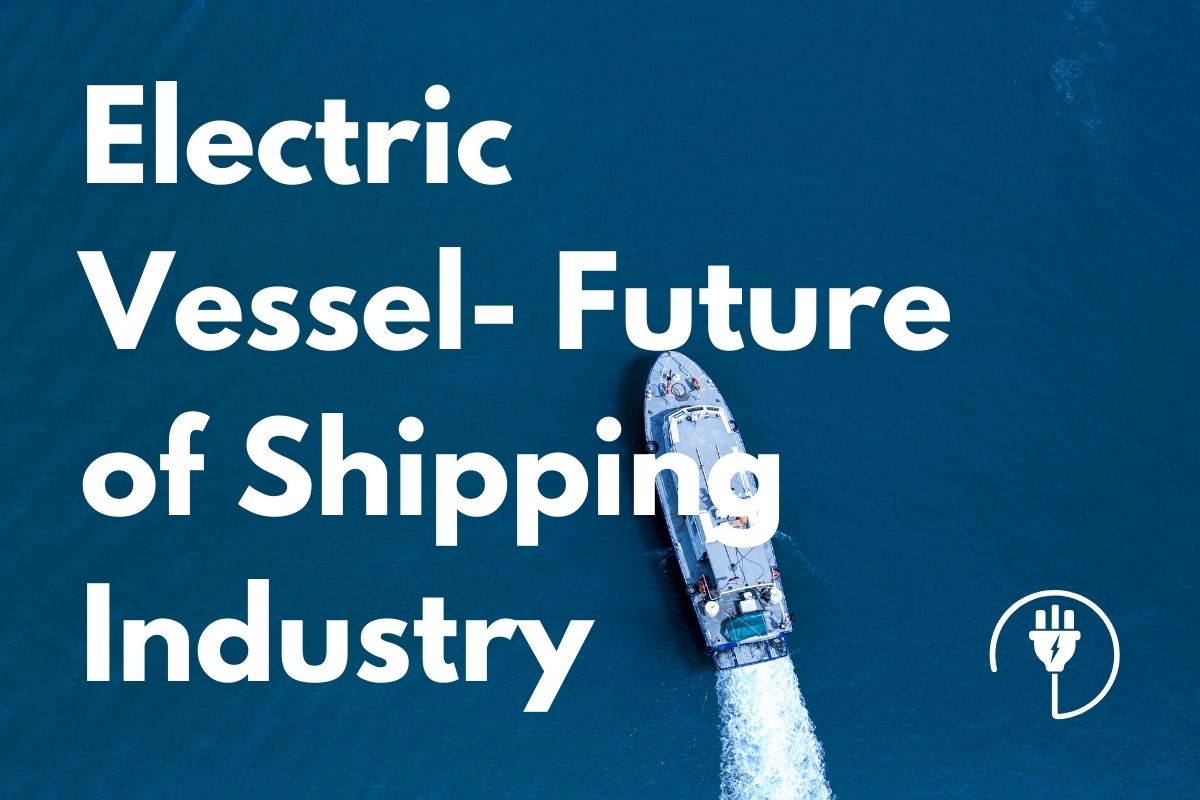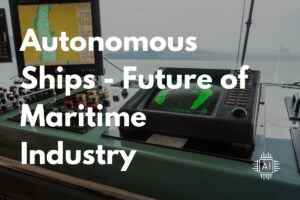We have successfully made electric cars, and electric planes; what next? Exactly, electric ships. If we can achieve electromobility in marine it would be the most advanced, more efficient era of shipping.
But is it possible to build fully electric ships? Here in this article, we will explore these questions together.
Why Electric Ships?
Shipping industry is the backbone of our modern world. Almost 80% of the world trade is carried through waterways, and transportation across the ocean will continue to rise about 3.8 percent per annum by 2022.
On the other hand, ships are one of the main reasons behind greenhouse gas emissions. International Maritime Organization stated that the shipping industry alone is responsible for nearly 2.5% of greenhouse gas emissions. It means one billion tons of CO2 each year.
Along with CO2 ships produce a large amount of exhaust gases like nitrogen oxides, sulfur oxides, soot particles, and fine dust. Cargo ships are in consequence the highest sources of pollution in the sea. As the size of ocean transportation will increase the emission of CO2 and other exhaust gases will increase parallelly. If it remains the same it will drastically impact climate change. One day which could be an issue of our existence on the Earth. If it remains the same it will drastically impact on climate change and lead to a climate catastrophe.
To decrease and cut down emissions many regulations and targets have been executed by the regulatory body International Maritime Organization (IMO). In 2018 IMO set an initial goal to cut down carbon emissions near at least 50% by 2050 for international shipping compared with 2008.
In another statement, Jonathan Lewis director of transportation decarbonization at CATF said:
“In order to combat the climate crisis, we must rapidly decarbonize marine shipping,”
Jonathan Lewis
How Do Ship Works On Different Drive Technology
- Diesel-electric drive system: Generators running with diesel generate electricity. This electricity runs electric engine and propels the ship. About 80% of the ocean-going ships use a diesel-electric drive system.
- Hybrid drive system: Electric batteries are on board along with the internal combustion engine. Batteries run the ship with an electric drive system. The internal combustion engine can additionally be switched on when a power pick is needed otherwise it will drive the diesel generators and can store the surplus energy into the batteries. With this technology, The ship could sail for some time only with electricity.
- Fully electric drive system: In this driving method there is no internal combustion engine on board. Batteries run the electric drive all by itself.
- Solar-powered drive system: Solar ships gather energy with the help of solar cells or photovoltaic cells by transforming the energy of light into electricity which is then stored in large lithium-ion battery pack. This electricity then drives ship motors and all other appliances. There is a great opportunity to run our inland vessels, ferries, and pleasure boats with the solar power drive system.
Shifting from internal combustion engine to emission-free electric drive requires various technologies. We have seen Hybrid technologies before electric cars and planes have shifted fully in electric. Just like that Hybrid technologies is an interim solution as there are still many difficulties and battery storage issues to implementing a purely electric drive system.
Needless to say, if we want to build safer and cleaner marine transport fully electric ships are the future.
Fully Electric Ships
When we talk about fully electric ships the first thing that comes into mind is; What will be the energy source of this large battery pack? We have two options for this.
Seaport will build infrastructure and provide facilities with first charging technology. Ships can be charged at the seaport and sail for another destination.
Alternatively, Batteries can be stored in containers that can easily be replaced and exchanged at the port, In this process, batteries do not have to be charged immediately which means ships need not wait longer at the port.
Ships have been 'semi-electric for many years and it will be quite easy to dive into hybrid drive systems first and then full-phase electric ships.
There is a huge achievement with some inland vessels e.g. ferries and pleasure boats that completely run with electricity. These inland vessels sail shorter distances and can run with smaller batteries.
Besides this, tremendous exertion is going through for the development and advancement of heavy electric cargo vessels.
China's all-electric ship: China launched world's first fully-electric cargo ship in Guangzhou. This all-electric ship is 70.5m in length integrating a battery pack of 2,400 kilowatts which can run the ship at a speed of 12.8kph. This first electric ship can carry about 2000 tons of products.
YARA Birkeland: Yara and Birkeland are jointly building world's first fully electric and autonomous container ship, YARA Birkeland.
KONGSBERG will develop and deliver all key enabling technologies, autonomous ship operation systems, and sensors altogether. The electric drive system, battery pack, and propulsion control systems will also be delivered by KONGSBERG. Currently, this zero-emission ship is going through a development process for autonomous operation and about to launch in 2021.
Though The energy efficiency of batteries capacity has increased a lot with recent engineering it is not enough to run heavy ships to cross long-distance oceans. Fully electric drive systems for cargo ships will take time to evolve.
Solar Ships
Many start-up have started building solar boats. Especially solar-powered recreational boats are the way to go forward.
'Silent-yachts' produce oceangoing luxury catamarans which are powered by solar energy. And now it is the market leader in the solar-powered yacht industry. Their vision is to establish a new era of yachting by creating the most innovative and self-sufficient yachts. 'Silent-yachts' is often called 'Tesla of the seas'.
'Tûranor PlanetSolar' is the largest solar-powered boat in the world. Swiss company 'PlanetSolar' has built the watercraft with 500 solar panels covering the top deck provide 120 kilowatts of energy that can sail at 5 knots speed. It is also the first solar-powered boat to sail around the world; Started the journey in September 2010 and took 585 days to complete.
By turning our recreational boat from engine to solar we can reduce harmful emissions and lead to cleaner and more efficient environmentally friendly sailing.
Challenges To Be Overcome
- Despite many developments, the energy density of the batteries is still too low and inefficient to run heavy ships
- Batteries are too large to carry ocean-going vessels
- Charging infrastructure is another big issue for fully electric vessels. Seaports have to invest a chunk amount to build charging infrastructure and equipment to facilitate charging.
Final Words
Despite having all these challenges it can be said that our future belongs to electromobility. Way back in 2017 Elon Musk said:
“Everything will go fully electric, apart from (ironically) rockets. Ships are the next easiest to solve after cars.”
Elon Musk
A couple of years ago building electric vehicles (EV's) was quite impossible for us but now EV's are on the street and every car manufacturer is going forward to build their electric car. Now it might be happening on the sea.



